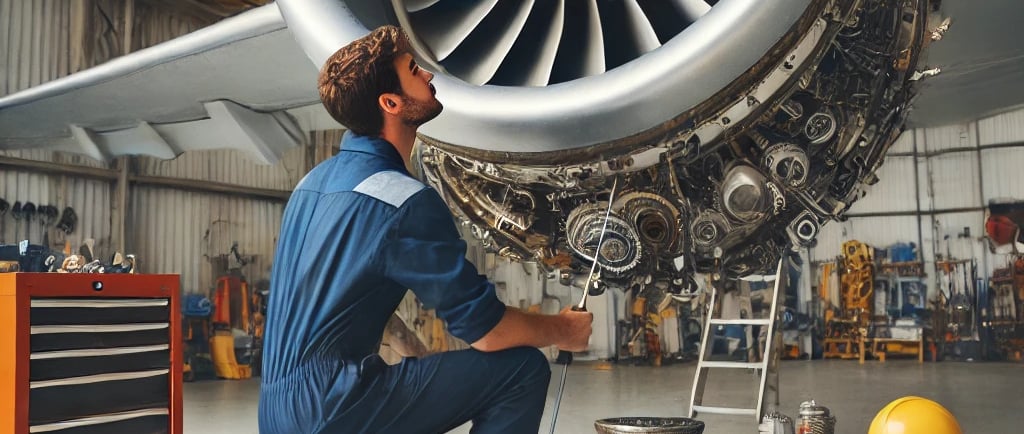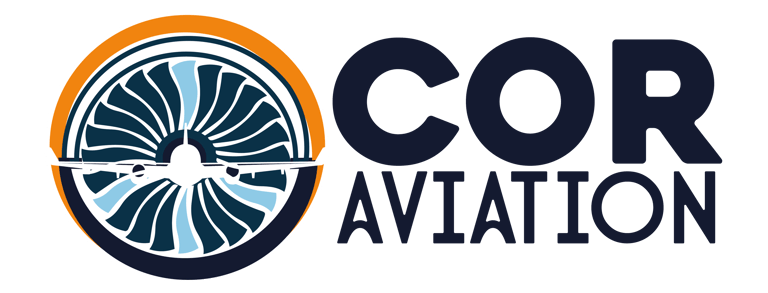PREVENTIVE MAINTENANCE IN AIRCRAFT: KEYS TO AVIATION SAFETY
Learn how preventive maintenance ensures safe and efficient flights. Explore scheduled inspections and emerging technologies revolutionizing the aviation industry.
COR AVIATION
1/2/20252 min read


PREVENTIVE MAINTENANCE IN AIRCRAFT: KEYS TO AVIATION SAFETY
Preventive maintenance is the backbone of aviation safety. Through scheduled inspections and the use of innovative technologies, aircraft are kept in optimal condition to operate efficiently and reliably. This article delves into fundamental practices, cutting-edge tools, and key strategies that ensure safety in every flight.
1. Why Is Preventive Maintenance Important?
Preventive maintenance ensures that aircraft operate under optimal conditions, minimizing the risk of incidents related to mechanical failures. These scheduled activities not only safeguard passengers and crew but also optimize operational costs by avoiding major repairs and extending component life.
Aviation regulators such as FAA, EASA, and AFAC establish strict guidelines to ensure every aircraft meets required safety standards. These inspections are not just mandatory but also reflect a commitment to operational excellence and customer trust.
2. Regular Inspections: A Vital Routine
Routine inspections are the cornerstone of preventive maintenance. These include:
Daily checks: Visual inspections and basic verifications before each flight to identify obvious issues.
Scheduled inspections: Detailed reviews conducted at specific flight hours, cycles, or months.
Condition-based maintenance: Continuous monitoring of critical components using advanced sensors and data analysis.
Implementing regular inspections can significantly reduce unplanned downtime and ensure aircraft remain operational for as long as possible.
3. Best Practices to Prevent Mechanical Failures
To ensure effective preventive maintenance, it is recommended to:
Continuous training: Ensure technicians are up-to-date with the latest technologies, tools, and regulations.
Use technical manuals: Strictly follow manufacturer guidelines and service bulletins.
Accurate documentation: Maintain detailed records of all maintenance activities, including test results and part replacements.
Advanced technologies: Leverage drones, augmented reality, and AI-assisted maintenance management systems for faster and more precise inspections.
4. Technological Innovations in Preventive Maintenance
Preventive maintenance is evolving thanks to technological innovations. Some of the most notable tools include:
Predictive maintenance: Systems that use AI to forecast failures before they occur.
Digital Twins: Virtual simulations that allow real-time monitoring of aircraft conditions.
3D Printing: Quick and customized manufacturing of spare parts to reduce downtime.
These innovations not only enhance safety but also make maintenance more efficient and cost-effective.
Conclusion
Preventive maintenance is not just a regulatory obligation but a strategic investment in the safety and efficiency of aviation operations. Adopting best practices and staying updated with the latest technological innovations can make the difference between operational success and unnecessary risks.
We Empower Aviation in Mexico & U.S.A.
CONTAC US
+52 5666118911
© 2024. All rights reserved.


